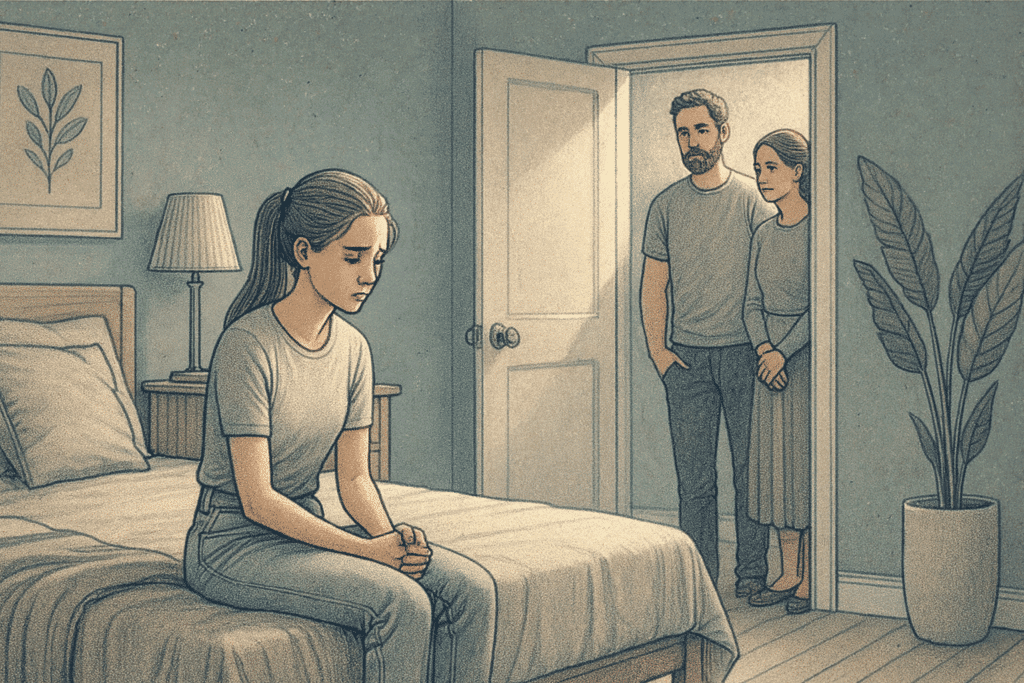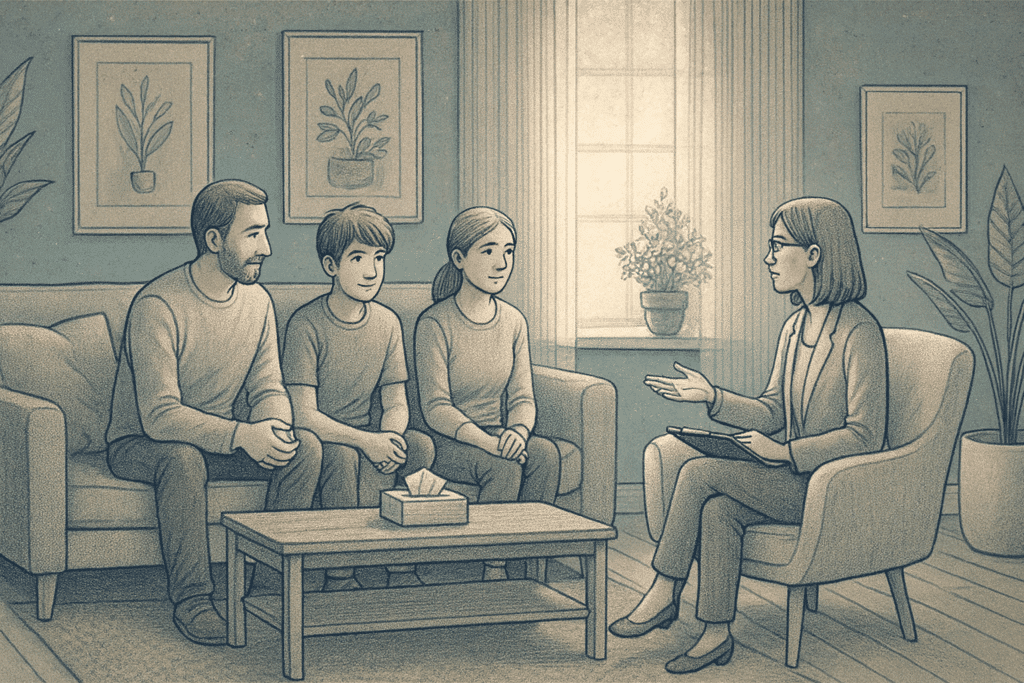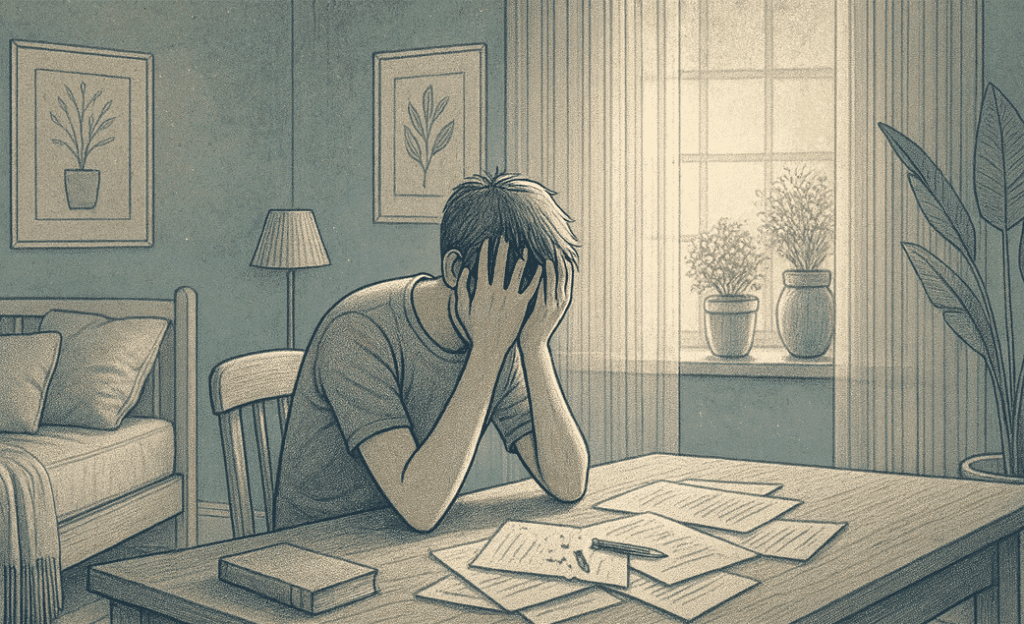Key Takeaways
- Intermittent Explosive Disorder (IED) involves sudden, intense anger outbursts that are disproportionate to the situation, going far beyond typical teenage moodiness or frustration.
- Warning signs include physical aggression, property damage, verbal threats, and immediate remorse after episodes, often leaving teens feeling confused and ashamed.
- Triggers can range from minor frustrations to overwhelming stress, but each teen’s pattern is unique and requires careful observation to understand.
- Therapeutic approaches like Cognitive Behavioral Therapy, Dialectical Behavior Therapy, and anger management skills provide teens with tools to manage intense emotions without explosive reactions.
- Mission Prep Healthcare offers specialized treatment programs for adolescents with IED, focusing on emotional regulation skills and family support through residential, outpatient, and telehealth services.
Understanding Intermittent Explosive Disorder in Teens
Intermittent Explosive Disorder (IED) is a genuine mental health condition where teens experience sudden, overwhelming episodes of anger that feel impossible to control. These outbursts erupt quickly, often without warning, and the reaction is far stronger than the situation calls for.
In those moments, a teen might yell, slam doors, throw objects, or even become physically aggressive. Once the storm passes, guilt and regret often set in. Many feel embarrassed, apologetic, or confused about why it happened.
Adolescence naturally brings emotional ups and downs, but IED takes that intensity to another level. The result is serious challenges at home, in friendships, and at school, leaving both teens and their families searching for ways to cope and move forward.
| Mission Prep Healthcare: Adolescent Mental Health Care Mission Prep Healthcare specializes in mental health treatment for teens aged 12-17, offering residential and outpatient programs for anxiety, depression, trauma, and mood disorders. Our therapies include CBT, DBT, EMDR, and TMS, tailored to each adolescent’s needs. With a structured, supportive environment, we integrate academic support and family involvement to promote lasting recovery. Our goal is to help teens build resilience and regain confidence in their future. Start your recovery journey with Mission Prep Healthcare today! |
Recognizing the Signs and Symptoms

Teens with IED often feel as surprised by their explosive reactions as their families do, experiencing genuine confusion and regret after episodes pass.
Spotting an IED can be difficult because anger is a natural part of being a teenager. The difference lies in how intense the anger feels, how often it erupts, and the fallout that comes after.
During an episode, a teen might clench their fists, turn red in the face, breathe rapidly, or shake as if their body has taken control. These bursts usually last a few minutes to half an hour, leaving behind exhaustion and regret.
It often shows up in broken objects, fights over small issues, or explosive reactions to simple requests like finishing chores. The impact goes beyond the outbursts themselves; relationships can suffer as those around them begin treading lightly or avoiding conflict altogether.
Between these episodes, many teens with IED appear completely fine. They may be warm, thoughtful, and engaged, which makes the sudden explosions all the more startling for their families and friends.
What Triggers Explosive Episodes in Teens
Understanding triggers is crucial for both prevention and treatment. Common triggers include feeling misunderstood, being told “no,” experiencing academic stress, dealing with social conflicts, or facing unexpected changes in routine. Sometimes the trigger seems incredibly minor, such as being asked to wait a moment or having their plans change slightly.
For many teens with IED, the trigger isn’t really about that specific moment. Instead, it’s often the final straw in a day or week of building stress, frustration, or emotional overwhelm. They might handle several small disappointments throughout the day, but one tiny additional frustration causes everything to explode.
Physical factors can also play a role. Being tired, hungry, or dealing with hormonal changes can make teens more vulnerable to explosive episodes. Environmental factors like loud noises, crowded spaces, or chaotic situations might also contribute to emotional overload.
Every teen’s pattern is different, which is why careful observation and professional assessment are so important for developing effective coping strategies.
The Impact on Family Life and Relationships
IED affects the entire family system, not just the teen experiencing the episodes. Parents often feel like they’re walking on eggshells, trying to avoid triggers while also maintaining appropriate boundaries and expectations. Siblings might feel scared, resentful, or confused about why their brother or sister gets so much attention.
Family activities can become sources of anxiety rather than joy. Parents might avoid taking their teen to public places, family gatherings, or social events out of fear that something might set off an episode. This isolation can make the situation feel even more overwhelming and hopeless.
Friendships also suffer when explosive episodes happen at school or in social settings. Teens with IED often struggle to maintain close relationships because their friends don’t understand why they react so strongly to seemingly minor issues.
The good news is that with proper treatment and support, families can heal and learn to thrive together. Understanding that IED is a treatable condition, not a character flaw or parenting failure, is the first step toward recovery.

Family therapy helps everyone understand IED and learn strategies to support their teen while maintaining healthy boundaries and expectations.
Treatment Approaches That Make a Difference
Effective treatment for IED focuses on helping teens develop emotional regulation skills and healthier ways to express and manage intense feelings. Cognitive Behavioral Therapy teaches teens to recognize the warning signs of building anger and interrupt the escalation process before it reaches an explosive point.
Dialectical Behavior Therapy provides practical skills for managing overwhelming emotions, including techniques for staying present during intense moments and communicating needs effectively. These skills help teens feel more in control of their reactions and more confident in their ability to handle frustrating situations.
Anger management programs specifically address the unique challenges of explosive anger. Teens learn to identify their personal triggers, practice relaxation techniques, and develop alternative responses to frustrating situations. These programs often include role-playing exercises that help teens practice new skills in safe environments.
Family therapy plays a crucial role in treatment because IED affects everyone in the household. Parents learn de-escalation techniques, how to set appropriate boundaries, and ways to support their teen’s progress without enabling explosive behavior. When the whole family works together, recovery happens more quickly and lasting change is more likely.
How Parents Can Support Their Teen at Home
Creating a calm, structured home environment helps reduce the likelihood of explosive episodes. This doesn’t mean avoiding all potential triggers, but rather building predictable routines and clear expectations that help teens feel more secure and in control.
When you notice your teen’s stress building, offer breaks or suggest they use coping skills they’ve learned in therapy. Sometimes a short walk, listening to music, or doing breathing exercises can prevent an episode from occurring. The key is intervening early, before emotions reach the explosive point.
During an episode, focus on safety first. Don’t try to reason with your teen or discuss the situation until they’ve completely calmed down. Afterward, when emotions have settled, have a gentle conversation about what happened and how to handle similar situations differently next time.
Consistency in your responses helps teens learn that explosive behavior won’t result in getting their way, but also that they’re still loved and supported even when they struggle with their emotions.
Why Mission Prep is Your Partner for IED Treatment

Mission Prep’s therapeutic programs provide teens with the skills and support they need to manage intense emotions and build healthier relationships.
When your teen’s explosive episodes are disrupting family life and affecting their ability to succeed at school and in relationships, Mission Prep Healthcare offers specialized treatment programs designed specifically for adolescents aged 12 to 17 dealing with emotional regulation challenges like IED.
Our comprehensive approach addresses the complex factors that contribute to explosive episodes through residential, outpatient, and telehealth services. We understand that medication isn’t always the answer, focusing instead on building practical emotional regulation skills that teens can use throughout their lives.
What sets our program apart is our commitment to involving the entire family in the healing process. IED affects family dynamics in profound ways, and lasting recovery requires everyone to learn new patterns of communication and support. Our licensed therapists work with families to develop personalized strategies that continue working long after formal treatment ends.
We create a safe, supportive environment where teens can practice new skills, process their experiences, and build confidence in their ability to manage intense emotions. Our goal isn’t just to reduce explosive episodes, but to help your teen develop the emotional resilience and self-awareness they need for healthy relationships and personal success.
Every aspect of our treatment prepares teens for real-world challenges while building their capacity for emotional regulation and conflict resolution. When you choose Mission Prep, you’re partnering with a team that understands the complexity of IED and knows how to help families find their way to healing and hope.
Frequently Asked Questions (FAQ)
How can I tell if my teen has IED or is just going through a difficult phase?
The key difference is the intensity, frequency, and consequences of the explosive episodes. With IED, the outbursts are significantly disproportionate to the trigger, happen regularly, and cause serious problems in relationships or daily functioning. If you’re concerned, a professional assessment can provide clarity and peace of mind.
What should I do during my teen’s explosive episode?
Focus on safety first—remove any dangerous objects and give your teen space to calm down. Don’t try to reason with them or discipline them during the episode. Stay calm yourself and wait until emotions have completely settled before discussing what happened or working on solutions.
Can teens with IED learn to control their explosive episodes?
Absolutely. With proper therapeutic support and consistent practice of emotional regulation skills, teens can learn to recognize warning signs and use healthy coping strategies before emotions reach the explosive point. Recovery takes time and commitment, but it’s definitely achievable.
How long does treatment for IED typically take?
The timeline varies for each teen depending on factors like severity, family support, and consistency with therapeutic practices. Some teens see improvement within a few months, while others benefit from longer-term support. The important thing is that progress is possible with the right approach.
What specific services does Mission Prep offer for teens with IED?
Mission Prep provides residential, outpatient, and telehealth programs specifically designed for adolescents struggling with emotional regulation issues like IED. Our services include individual therapy, family therapy, group sessions, and skills training, all focused on building long-term emotional resilience and healthy coping strategies.















